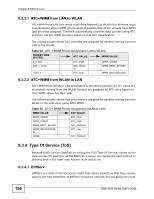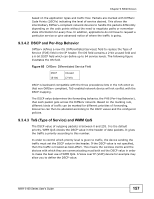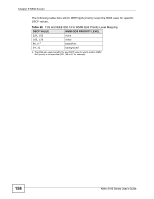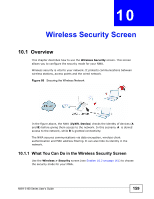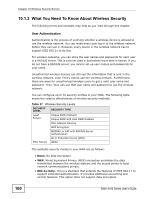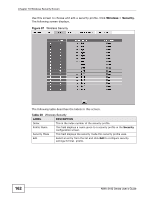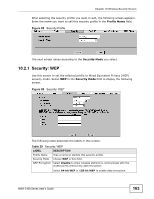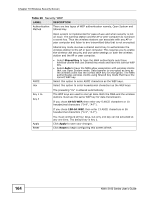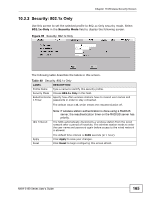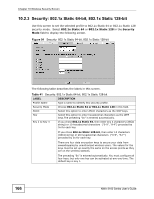ZyXEL NWA-3163 User Guide - Page 161
The Security Screen
 |
View all ZyXEL NWA-3163 manuals
Add to My Manuals
Save this manual to your list of manuals |
Page 161 highlights
Chapter 10 Wireless Security Screen • 802.1x-Static64. This provides 802.1x-Only authentication with a static 64bit WEP key and an authentication server. • 802.1x-Static128. This provides 802.1x-Only authentication with a static 128bit WEP key and an authentication server. • WPA. Wi-Fi Protected Access (WPA) is a subset of the IEEE 802.11i standard. • WPA2. WPA2 (IEEE 802.11i) is a wireless security standard that defines stronger encryption, authentication and key management than WPA. • WPA2-MIX. This commands the NWA to use either WPA2 or WPA depending on which security mode the wireless client uses. • WPA2-PSK. This adds a pre-shared key on top of WPA2 standard. • WPA2-PSK-MIX. This commands the NWA to use either WPA-PSK or WPA2- PSK depending on which security mode the wireless client uses. Passphrase A passphrase functions like a password. In WEP security mode, it is further converted by the NWA into a complicated string that is referred to as the "key". This key is requested from all devices wishing to connect to a wireless network. PSK The Pre-Shared Key (PSK) is a password shared by a wireless access point and a client during a previous secure connection. The key can then be used to establish a connection between the two parties. Encryption Encryption is the process of converting data into unreadable text. This secures information in network communications. The intended recipient of the data can "unlock" it with a pre-assigned key, making the information readable only to him. The NWA when used as a wireless client employs Temporal Key Integrity Protocol (TKIP) data encryption. 10.2 The Security Screen Note: The following screens are configurable only in Access Point, AP + Bridge and MBSSID operating modes. NWA-3160 Series User's Guide 161



